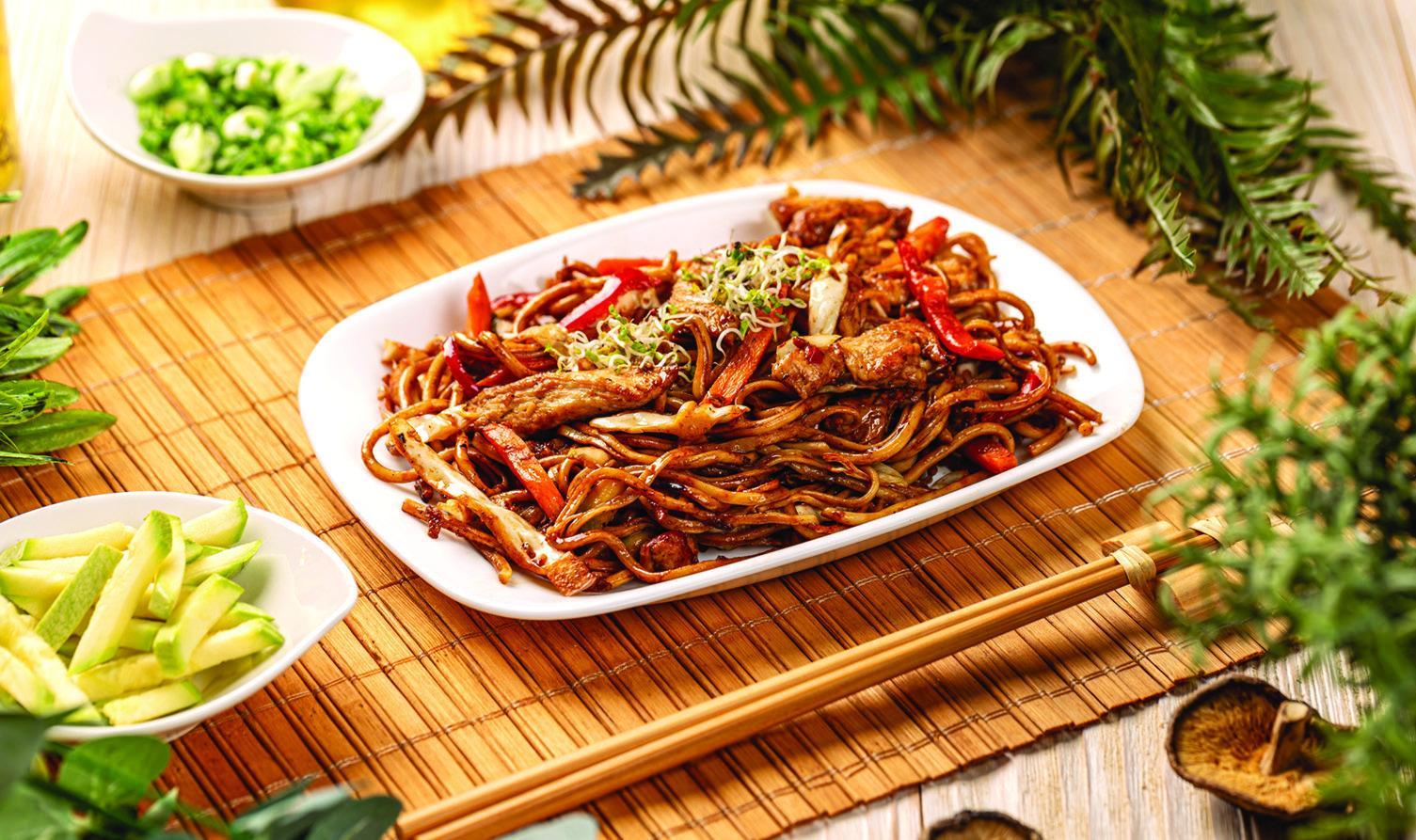
Contrary to popular belief, the Chinese were the first to eat a noodle-like food all the way back around 2000 BCE.
Photo from Metro Creative

SAN MARCOS PUBLIC LIBRARY
625 E. HOPKINS ST.
512-393-8200
Answers to Go
Dear Readers:
At the library, we get many questions about food, diet and recipes. Thankfully, we have a HUGE collection of recipe and food-related books. Here are a few of those questions to tempt you:
Q.A nine-yearold was arguing with his little brother about this question, “Which came first, ketchup or salsa?” What a good question.
A. The answer is…salsa. Salsa is a Spanish word that means “sauce.” It is usually made from tomatoes, chili peppers, onions, garlic, spices, and herbs like cilantro. Hundreds of years before the Heinz company made ketchup, Aztec rules in Mexico ate a mixture of tomatoes, chili peppers, and ground squash. A Spanish writer called it “salsa” for the first time in 1571. The Heinz Company made the first modern ketchup in 1875, but it wasn’t always known for its ketchup. When the company first started, it sold horseradish! The recipe came from H.J. Heinz’s mother.
Q.Can a human being live on just grass?
A. No. The human body is not designed to digest grass. Cows and goats can survive on grass because they have multiple stomachs that assist their digestion. Grass alone has very little nutrition. The average cow must eat over 30 pounds of grass or similar plant matter each day. This should inform you of how little nutrition grass has.
Q.Where did we get pasta? From the Italians?
A. No. While some historians say the Etruscans (ancestors of Italians) were making pasta in 300 BCE, the Chinese were eating a noodle-like food in about 2000 BCE.
Q.Who ate better – the Union or Confederates in the Civil war?
A. According to ration lists, the Union Army appeared to have the best-fed soldiers in the world. But the men did not get their full ration of food every day. Food sometimes was plentiful and other times was scarce for Union soldiers. Each soldier received individual rations – pork or bacon, salt or fresh beef, soft bread or flour and oatmeal. This was supplemented by rations for groups of soldiers. Items such as beans or peas, rice or hominy, coffee or tea, sugar, vinegar potatoes and molasses were provided to an army unit.
Q.I heard that scientists have eaten meat that was discovered as part of an archaeological dig. Is this true?! A. Strangely, yes! In 1979, scientists ate a small part of a 36,000-year-old steppe bison (like a buffalo) that was unearthed. Despite drowning the meat in a spicy stew, they found it still tasted like mud. (Go figure!)
Q.Can you really eat dandelions?
A. Yes! Indigenous people knew that dandelions were a valuable vegetable. Not only can they be eaten as a salad (use fresh young tender leaves that have not been sprayed with weed killer) but they can be used to make wine and a coffee-like beverage.
These answers were gleaned from the books below. For more stories about food and diet, check out MORE books from the library!
• “Food for the Settler” by Bobbie Kalman
• “It’s Disgusting and We Ate It!: True Food facts from Around the World and Throughout History” by James Solheim • “Civil War Cooking: The Union” by Susan Dosier
• “Food Creations from Hot Dogs to Ice Cream Cones” by Jaqueline A. Ball
• “Pass the Pandowdy, Please: Chewing on History with Famous Folks and their Fabulous Foods” by Abigail Ewing Zelz Suzanne Sanders is the columnist for the library. She is the Community Services Manager for the San Marcos Public Library and came from the Austin Public Library in 2015 after having served there as a librarian for over 20 years. She gratefully accepts your questions for this column.











